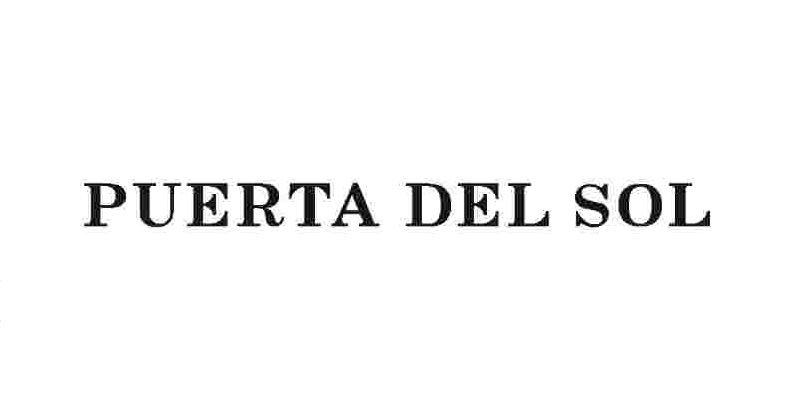In a recent appeal decision, the Japan Patent Office (JPO) overturned examiner’s refusal and decided to register trademark “PUERTA DEL SOL” in connection with jewels, accessories, clothing and other goods of class 14, 18, 25 and 34 by finding the term shall not be recognized as a geographical indication, one of the most famous sites in Madrid, Spain.[Appeal case no. 2019-7624, Gazette issued date: January 31, 2020]
PUERTA DEL SOL
PUERTA DEL SOL Co., Ltd., a Japanese jewels and accessories company, applied for registration of word mark “PUERTA DEL SOL” in relation to jewels, accessories, bags, clothing, shoes and other various goods of class 14, 18, 25 and 34 on January 23, 2018.

On March 19, 2019, JPO examiner refused applied mark due to lack of distinctiveness based on Article 3(1)(iii) of the Trademark Law. Examiner found that PUERTA DEL SOL, a public square in Madrid (the capital and largest city of Spain), one of the best known and busiest places in the city, the heart of Madrid’s historic center used to be on the eastern border of the city, has been known for a famous tourist spot in Madrid. Since relevant traders and consumers in Japan are familiar with circumstances that variety of souvenirs and gifts are on sale at tourist spot, it is presumed that consumers will merely conceive the applied mark just as a geographical indication in connection with the designated goods, not a source indicator.
Article 3(1)(iii)
Article 3(1) of the Trademark Law is a provision to prohibit descriptive marks from registering.
Section (iii) of the article aims to remove any mark merely or directly suggesting quality of goods and services.
“Article 3(1) Any trademark to be used in connection with goods or services pertaining to the business of an applicant may be registered, unless the trademark:
(iii) consists solely of a mark indicating, in a common manner, in the case of goods, the place of origin, place of sale, quality, raw materials, efficacy, intended purpose, quantity, shape (including shape of packages), price, the method or time of production or use, or, in the case of services, the location of provision, quality, articles to be used in such provision, efficacy, intended purpose, quantity, modes, price or method or time of provision;”
To dispute the refusal, applicant filed an appeal on June 10, 2019.
Applicant argued “PUERTA DEL SOL” shall be sufficiently distinctive in connection with the goods in question by citing facts that the term is legitimately registered even in the territory of Spain and less familiarity to Spanish language among relevant consumers with an ordinary care, Google search by a keyword “PUERA DEL SOL” reveals most of websites refer to applicant’s goods and business.
If so, it is groundless to find that relevant consumers would conceive applied mark as a geographical indication name when used on goods in question.
Appeal Board’s decision
The Appeal Board overturned the examiner’s decision by stating that relevant consumers and traders at the sight of applied mark are unlikely to see the mark to indicate the place of origin or sale when used on goods in question. Because the Board has no reason to believe the term “PUERTA DEL SOL” is known for a famous tourist square in Madrid even though Spanish dictionary and encyclopedia mention so by taking into account less familiarity to Spanish language among relevant consumers in Japan. Furthermore, there is no clue to find that the square is commonly indicated to represent a place of origin and sale in connection with the goods in question.
Criteria for Trademark Examination Guideline
Trademark Examination Guideline (TEG) pertinent to Article 3(1)(iii) provides that where a trademark is merely composed of a geographical name in foreign country or sightseeing area, the mark is deemed as “the place of origin” of goods or “the place of their sale”, provided that consumers or traders generally recognize that the designated goods will be produced or sold at the place indicated by the geographical name.
Trademark Examination Manual, 413.103.01 sets forth criteria to examine trademarks related to foreign geographical name.
In the cases of (a) the name of a capital, (b) the name of a state, (c) the name of a prefecture, (d) the name of a state capital, (e) the name of a province, (f) the name of the capital of a province, (g) the name of a county, (h) the name of the capital of a prefecture, (i) a former country name, (j) an old regional name, (k) the name of a district, (l) the name of a city, or special district, (m) the name of a busy downtown street, and (n) the name of a sightseeing area, even though these names may not be directly described in a dictionary or other documents/material as the place of origin, the place of sales (location of transaction) of the goods, or the location of provision of services (location of transaction), if a factor exists that establishes a connection between the goods and the name as the place of sales (location of transaction), or the location of the provision of services (location of transaction), in principle, the trademark will be refused on the grounds that it indicates the location where the goods are sold (location of transaction) or the location of provision of services (location of transaction)

